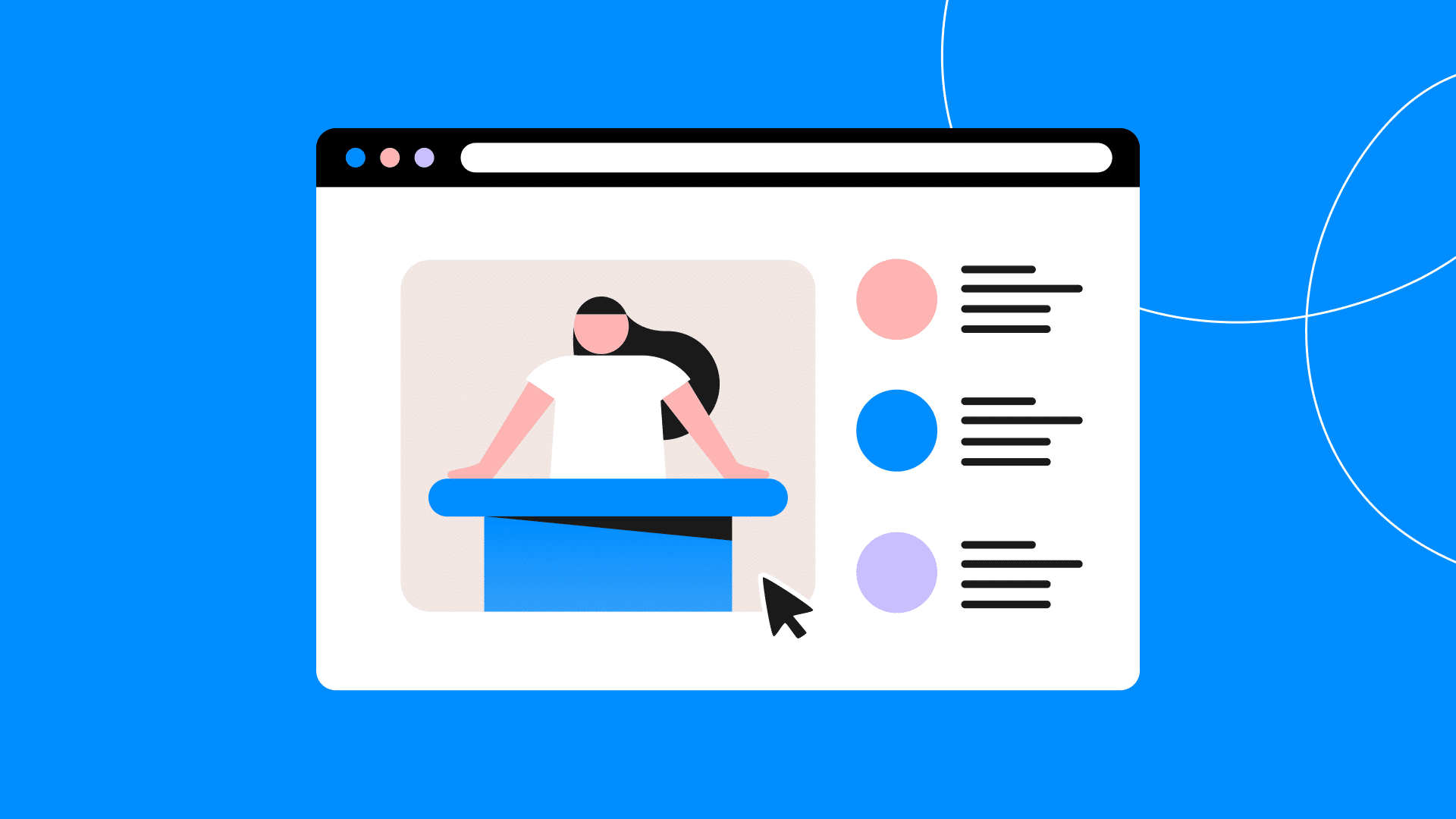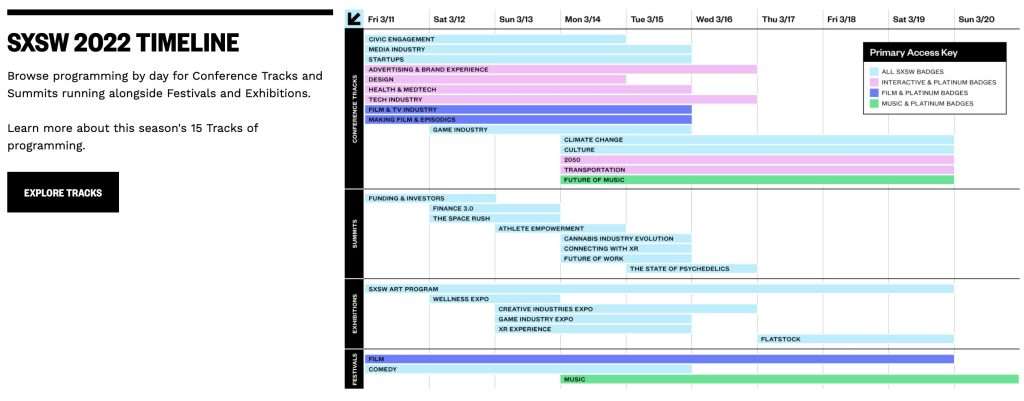12 Tips for Building a Conference Agenda


Where is the next session being held? Who’s leading this workshop? Which sessions will be most helpful to me? These are just a handful of the questions racing through an attendee’s mind during an event. The key to creating an enjoyable event experience without overwhelming attendees is to organize event content in an intuitive and digestible way. For this reason, creating a quality conference agenda is essential.
The conference agenda is the backbone of the event content. Ensuring all event information is discoverable, consumable, and relevant makes an event agenda stand out. Remember that a strong conference agenda is just as crucial for organizers as for attendees. An agenda allows organizers to accurately measure event engagement, seek attendee feedback, and offer sponsorship opportunities.
The following tips are meant to assist in creating a conference agenda from beginning to end. These best practices can be applied in various use cases to ensure a quality event agenda.
1) Conduct Pre-event surveys
Before diving into the structure of the agenda, organizers must know what type of content attendees want to learn. Once the overarching theme has been finalized, the topic must be divided into pieces of digestible content.
An excellent way to gauge the type of sessions that will be most popular is to ask for attendees’ opinions directly. This can be done by including survey questions within the event registration form, such as:
- What do you hope to take away from this conference?
- What types of sessions will be most valuable to you?
- How do you hope to increase your knowledge regarding this topic?
- What kind of networking opportunities do you like?
Questions like these will help you craft the event content and know the types of speakers most helpful to attendees. These questions can also be asked through email marketing campaigns before the event or through the event app. Polling is an excellent way to understand the attendee’s perspective to help inform big decisions.
2) Sync the Agenda with the Event App
Once the content within the conference agenda has been established, figuring out how to make this information accessible to attendees is the next important step. Before the digital age, agendas were mostly distributed in paper form. With the rise of the event app, organizers can upload all event sessions and content in the app for attendees to access before, during, and after the event.
Hosting the conference agenda within the event app makes for a smoother experience. The app will also include other aspects of the event related to the agenda, such as networking with other attendees, viewing a list of speakers, and accessing a list of sponsors. The smoother the sync between your app and agenda, the better the overall event experience.
3) Organize Sessions by Tracks
A common challenge when organizing event content is figuring out a way for all information to be easily searchable. If your event has over a hundred sessions, navigating the entire schedule can be overwhelming.
To avoid this, organize sessions by tracks. A track is an umbrella topic under which multiple sessions can be found. For example, if you are hosting a social media conference, one track you may want is video marketing. This track will include all sessions focused on video, and attendees can search accordingly. This makes for a much more intuitive and personalized agenda experience.

4) Create Multiple Agenda Views
Just as people differ in how they learn new information, they also differ in how they view information. For this reason, an agenda should have multiple viewing options, especially if there are many different sessions. Examples of organizing agenda viewing options are by room number, speaker, time, and track. The types of views you choose should align with the overall conference structure as well as the venue.
5) Give Attendees the Ability To Add Sessions to Their Calendars
In some instances, attendees prefer to have the conference agenda directly embedded into their calendars. This allows attendees to see each session within the context of their schedules, making the event experience more personally relevant.
A seamless attendee experience is always a key factor for event success and being able to quickly add sessions to a personal calendar makes for an intuitive experience.
6) Facilitate Attendee Engagement Within the Agenda
A conference agenda provides minimal value to the attendee if it simply serves as a digital version of the day’s schedule. To maximize its value, the agenda should be as interactive as possible. Ensure that each session can be liked and rated, allowing the organizer to collect valuable information to draw actionable insights.
Making an interactive event agenda allows attendees to be more engaged throughout the conference while also offering essential data that organizers can then use to inform future decisions.
7) Let Attendees Take Polls Within the Agenda
Staying in line with the previous point, a specific way to encourage engagement is by serving live polls within the agenda. As the organizer, this helps you capture valuable real-time feedback and allows you to share it directly with your speakers.
Polls within the agenda can help to improve not only future events but the event that is currently being held. Real-time analysis of sessions is an important way to check the pulse of your event and will help you to make certain changes to the schedule if deemed necessary.
8) Offer Exposure to Sponsors
Event organizers are always thinking of creative ways to provide value to their sponsors. Because the event agenda is constantly being viewed and engaged throughout the conference, it serves as ideal real estate for sponsors to showcase their brands and offerings. Solutions such as sponsored sessions and polls are great ways for companies to get directly in front of the attendees. Having an agenda that can provide proper exposure on behalf of your partners is a key leveraging point when securing event sponsorship.
 Sponsored session within the Bizzabo event app
Sponsored session within the Bizzabo event app
9) Make the Agenda Shareable on Social Media
To increase interest in the event, make the agenda shareable on social media before the event date. In addition to your other marketing strategies, making the agenda viewable and shareable on social media will allow the event content to speak for itself and possibly persuade more people to register. In most cases, an agenda doesn’t need to be a secret. The more social media-friendly the agenda is, the more likely it will serve as additional marketing collateral for your event.
10) Capture Agenda Analytics for Deeper Insights
While providing opportunities for attendees to engage with the agenda is essential, those actions mean very little if they cannot be measured. Build a conference agenda to capture and review all engagement after the event. For instance, Bizzabo’s analytics dashboard will provide an accurate overview of event agenda performance.
These metrics will interest key stakeholders such as sponsors and senior leadership because stats like these shed light on the overall event ROI. Proving event ROI is necessary to attract more sponsors for future events and persuade managers with decision-making power to continue to invest in live events.
11) Apply Event Branding to the Agenda
The conference agenda is not solely a means of transferring information; it is an extension of the event brand. When attendees view the agenda, they should be able to associate it with your particular conference immediately.
A customizable editor offering a wide range of fonts, colors, and other design details will be necessary to create an agenda that is as on-brand as possible. Treating the conference agenda as an extension of your event brand will further solidify the uniqueness of your event due to the consistent aesthetic across all attendee-facing touchpoints.
12) Build the Agenda in All-in-one Event Software
Many of the tips mentioned on this list, such as agenda analytics and syncing with the event app, require that the agenda builder be housed within an all-in-one event management software. Most event platforms will have a native agenda builder. Still, it is essential to be fully aware of its capabilities and to discern whether these functionalities align with your goals for the conference agenda.
For example, if post-event analytics is a priority, ensure engagement can be measured from the backend. Stand-alone agenda builders could not provide as much value as those housed within an all-in-one platform. Doing due diligence when researching event software ensures a solid conference agenda.
